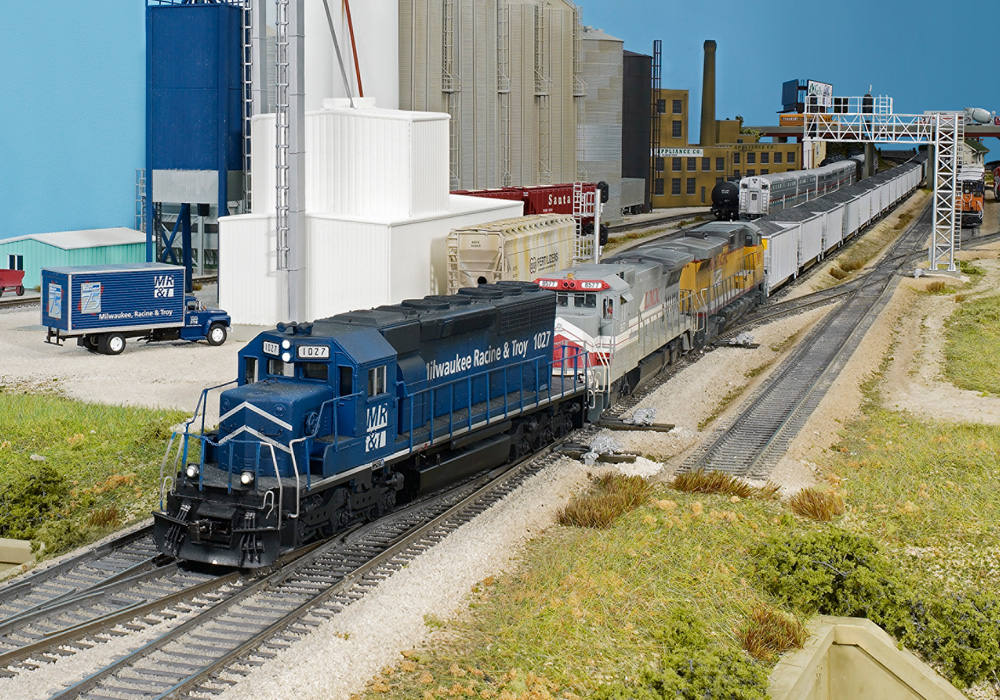Consisting DCC locomotives to run together
Q: Can you provide a simple procedure for pairing locomotives in a consist? One locomotive is pulling or pushing the one in front. – Stephen J. Szypula
A: In Digital Command Control parlance, grouping locomotives so they all respond at once to the same throttle commands is called consisting. There are three methods of consisting locomotives, and they have their advantages and disadvantages.

The easiest is called simple consisting, basic consisting, or address consisting. It simply involves programming the decoders on all the locomotives in the consist to the same address. It’s easy to do, and portable; you can take all your locomotives from your layout to a friend’s and then to the club, and they’ll continue to respond to the same address. The drawbacks are that it’s not realistic, as all the locomotives will also respond to commands like turning on the headlight and sounding the horn and bell. On the prototype, only the front locomotive would do that. Also, unless you’ve done other programming to make one or more of the locomotives run backward, they all have to face the same direction.
The second is called command-station-assisted or universal consisting. This method tells the DCC base station which locomotives are to be treated as part of the consist. Different DCC systems have different methods for setting up universal consists, so consult your system’s manual. With universal consisting, you can individually set each locomotive’s direction and how it responds to commands (turning off the headlight, horn, and bell for trailing units, for instance).
The biggest drawback here is that it’s tied to the DCC system, not to the locomotives, so it’s not portable. If you take your locomotives to the club layout, you’ll have to reprogram your consist on the club system.
The most advanced consisting method is called – you guessed it – advanced consisting. It’s a little more complicated than the other methods, but it gives you more capabilities. Older decoders don’t support advanced consisting, but these days, practically all of them do. Under advanced consisting, you program the same consist address (a number from 1 to 127) into CV19 of all locomotives in the consist. All locomotives will then respond simultaneously to commands sent to the consist address. By programming different values into CVs 21 and 22, you can control which direction each locomotive moves, as well as which function keys they respond to. For example, you can set the trailing units so they ignore lighting, bell, and horn commands, but still respond to the key that turns on the dynamic brakes. A drawback is the complexity of programming CV21 and 22. Luckily, there are tools that help you with this, like Digitrax’s online calculator and the Consist Tool in Java Model Railroad Interface’s DecoderPro software.
Whatever method you use to consist your locomotives, it’s important to make sure that they all respond to speed steps in the same way. You don’t want one locomotive holding back the consist while another grinds its wheels. That sounds like what you’re talking about when you say that one locomotive is pulling or pushing the other. Making sure the same speed step result in roughly the same speed is called speed matching. Comparing your locomotives’ responses to different speed steps and tweaking CV2 (Vstart), CV5 (Vmax), and CV6 (Vmid) will usually yield speed curves close enough to each other for most modelers. But that’s a process a bit too complicated to explain in this space.
If you can’t wait to know more about speed matching, check out Larry Puckett’s DCC Corner column “Speed matching for DCC consists” in our September 2016 issue.
Send us your questions
Have a question about modeling, operation, or prototype railroads? Send it to us at AskTrains@Trains.com. Be sure to put “Ask MR” in the subject.













